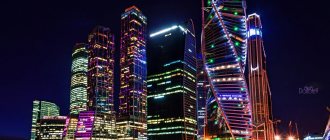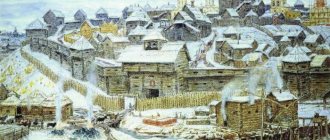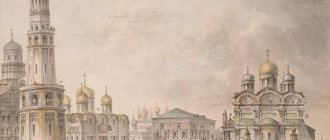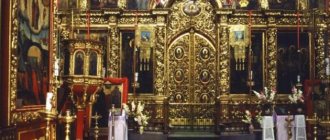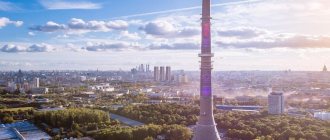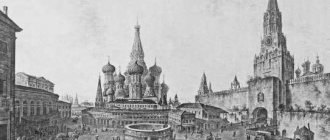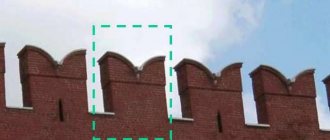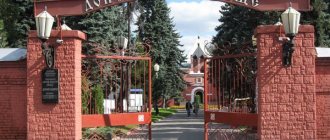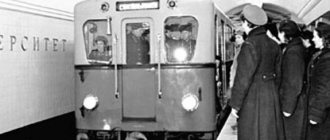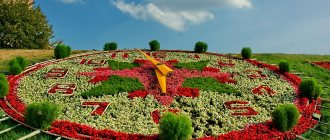From the history of the Kremlin
At one time, the construction of the Kremlin was started by Prince Ivan the Third. The Kremlin walls and towers, made before his reign from white stone - limestone, the prince ordered to be replaced with more durable ones made of baked brick. Many of them have remained unchanged to this day.
For the grandiose construction, the Moscow sovereign invited European architects - Italians. One of them, Antonio Fiorovanti, became the author of the general plan for the Kremlin’s defensive structures.
Since then, only once has large-scale construction work been required here. This happened after the devastating French invasion of 1812. During their retreat, leaving the city, they mined the Kremlin. The enemy's charges only partially worked, but it took 20 years to restore the damage.
The buildings owe the appearance of the Kremlin that residents and guests of Moscow contemplate to the competent actions of the architect O.I. Bove.
Today the Moscow Kremlin is decorated with 20 towers. They are all different, no two are alike. Each of the towers has its own name and its own history. Only two did not get names, they are called that: First Nameless and Second Nameless.
Similarities and differences
With the completion of the construction of this tower, work was completed on the creation of defensive structures of the entire northwestern section of the wall - from this side the Kremlin became impregnable. The huge tower at the top ended with battlements, the wooden tent had a hipped roof. According to documents from 1585, this tower had chimes, which made it similar to Spasskaya. In addition, double-headed eagles were installed on both, and on Troitskaya the coat of arms of Russia was more ancient, assembled from several parts secured with bolts. And when in 1685 a multi-tiered top and a high stone tent, white turrets, and other white stone decorations were added, the resemblance to the main Spasskaya Tower became very great. And a year later, new chimes were hung (when they burned down in the Moscow fire of 1812, they were never restored).
From the history of the towers
The difference in the size of the towers depended on their role in protecting the city. Each had its own exit to the adjacent walls. This allowed the patrols to bypass all the walls of the Kremlin without going to the ground. The shooters, hiding on the upper platforms of the buildings, were protected by merlons - ledges that completed the fortress wall.
The first in the general ensemble was the Taynitskaya Tower . It got its name because of the underground secret passage that connected it to the river.
In case of a long siege of the fortress by enemies, a secret passage to the river served to deliver water. The tower stretches 39 meters high.
The rightmost tower has two names at once. Nowadays it is called Moskvoretskaya . Once upon a time it was called Beklemishevskaya after the name of the man next to whose yard it was laid.
Enemies most often attacked from the Moskva River, and the Moskvoretskaya Tower always had to be the first to defend itself. That's why it's so formidable, with a lot of loopholes. Its height is 46.2 meters.
The Vodovzvodnaya Tower is named so because of the machine that was once installed inside. She raised water from a well located below to the very top into a large tank. From there, water flowed through lead pipes to the royal palace in the Kremlin. The water supply worked for a long time. Then the car was taken to St. Petersburg for fountains. The height of the tower with the star is 61.4 m.
At the foot of Borovitsky Hill, once covered with pine forest, stands the Borovitskaya Tower . This is a gate tower, which received its name from the proximity of the forest to it. It has a through passage to the Kremlin territory. Another name for it is Predtechenskaya. Today it is used for the main passage of official motorcades. The height is 54 m, its top is decorated with a ruby star.
The armory tower was built in the 15th century and is 39 meters high. This is a quadrangle tapering upward with a square tiered roof. Behind this tower, the Armory Chamber was built in the Kremlin. It contains many Kremlin treasures - weapons, precious dishes, helmets, chain mail of ancient Russian warriors. This chamber gave its name.
Walking along the walls of the Kremlin, you can see the Trinity Bridge, spanned across the Neglinnaya River many centuries ago. This bridge leads to the gates of one of the tallest Kremlin towers - Trinity .
It got its name from a church located near the Kremlin. Until 1935, an imperial double-headed eagle was installed on the top. For the next anniversary of the revolution, the eagle was removed and red stars were installed on it and the other main towers of the Kremlin. The height of the tower with the star is 80 meters.
The bridge connects the Trinity Tower with another - low and wide. This is the Kutafya Tower. In the old days, this was the name given to a fat, clumsily dressed woman. The tower was made more elegant only in the 17th century.
Before this, Kutafya was very harsh with drawbridges at the side gates and hinged loopholes. She guarded the entrance to the Trinity Bridge. Kutafya Tower is the lowest in the Kremlin. Its height is 13.5 meters.
Konstantino-Eleninskaya Tower. It was built in 1490 and was used for the passage of the population and troops to the Kremlin. It owes its name to the Church of Constantine and Helena that stood here in ancient times. It was built because the Kremlin had no natural barriers on its side. The structure was equipped with a drawbridge, a powerful archway and travel gates. At the beginning of the 19th century they were dismantled. Height 36.8 meters.
The Spasskaya Tower was built in 1491 to protect the northeastern part of the Kremlin, which had no natural water barriers. Its name comes from the 17th century, when an icon of the Savior was hung above the gate. Travel gates were considered holy. No one rode through them on horseback or walked through them with their heads covered. The regiments marched through the gates, and here they met kings and ambassadors.
In the 17th century, the coat of arms of Russia - a double-headed eagle - was placed on top. In 1852, a clock was installed that we still see today.
The Kremlin chimes are large clocks with a musical mechanism. Eleven bells sound melodic chimes every 15 minutes. The Kremlin chimes mechanism occupies three floors. Previously, it was wound up manually, now - using electricity. The height of the tower with the star is 71 meters.
The Senate Tower at first did not have a name and received it only after the construction of the Senate building, whose green dome rises above the fortress wall.
The tower rises behind the mausoleum of V.I. Lenin. It is the oldest in the Kremlin. Built in 1491 in the center of the north-eastern part of the Kremlin wall, it served only defensive functions. The tower reliably protected the Kremlin from Red Square. Its height is 34.3 meters.
At the very beginning of Red Square is the Nikolskaya Tower . The name comes from the Nikolsky Monastery, located nearby. An icon of St. Nicholas the Wonderworker was placed above the passage gate. A drawbridge over the moat and protective gratings made it inaccessible to the enemy.
In 1612, militia troops under the leadership of Minin and Pozharsky entered through its gates. They liberated Moscow from the Polish-Lithuanian invaders.
The tower, damaged by Napoleon's troops and revolutionary artillery fire in 1917, was restored several times. Since 1935, its dome has been crowned with a five-pointed ruby star.
The Commandant's Tower got its name in the 19th century, since the commandant of Moscow was located nearby in the building. Located on the western side of the Kremlin wall between the Trinity and Armory towers. It is an elongated quadrangle with a base widening towards the bottom and hinged loopholes. It has a height of 41.2 meters.
At the turn of the Kremlin wall there is another tower. From a distance it appears round. Up close you realize that this is not the case, because it has 16 sides. This is the corner Arsenal Tower .
Once upon a time she was called Sobakina, after the name of a person who lived nearby. But in the 18th century, the Arsenal building (military warehouse) was erected next door, and the tower was renamed. In her dungeon there is a well that is more than 500 years old. It always has fresh and clean water. Previously, there was an underground passage from the Arsenal Tower to the Neglinnaya River. Height 60.2 m.
The alarm tower was built for observation and patrol. In case of approaching danger, everyone was warned about it by ringing the alarm bell. Hence the name.
At the end of the 18th century, a riot began in Moscow at the sound of the alarm bell. For divulging bad news, the bell was punished by deprivation of the tongue. It remained idle for a long time, and then was put away in a museum. Height 38 m.
To the right of the Alarm Tower is the Tsar's Tower. With her appearance, she stands out from the general ensemble because she is completely unlike the others. There are four columns directly on the wall, and on them there is a peaked roof. There are neither powerful walls nor narrow loopholes, because it was not built for defense at all.
According to legend, Tsar Ivan the Terrible loved to watch from this place what was happening on Red Square. Later, the smallest tower was built here and called it Tsarskaya. Height 16.7 meters.
The middle Arsenal tower was built on the site of the wooden Donskoy tower. She guarded the dams on Neglinnaya and kept a secret grotto inside. It is closely adjacent to the Arsenal building, so it is not difficult to guess the name. Previously called Granena due to the architectural features of the facade. This is an elongated quadrangle with a stepped superstructure. Height 38.9 meters.
in the First Nameless Tower. This is precisely what explains the fact that it was destroyed more often than others. It was completely destroyed under Napoleon, then restored. Height 34.1 meters.
The second Nameless Tower is located in the Kremlin wall opposite the Moscow River. It has a square cross-section. Previously there was an entrance gate. After the construction of the Kremlin Palace, it was dismantled and rebuilt. Height 30.2 meters.
The Petrovskaya Tower, together with the two Nameless Towers, was built to strengthen the southern wall, which was most often attacked. She received her name from the church of Metropolitan Peter. The building was rebuilt 3 times and used by Kremlin gardeners for their needs. Height 37.1 meters.
According to legend, the miraculous icon of the Annunciation was previously kept in the Annunciation In 1731, the Church of the Annunciation was added. Later, a gate was made for the passage of laundresses to the Moscow River, called Portomoyny. During Soviet times, the gates were bricked up and the church was dismantled. The height of the tower with a weather vane is 32.5 meters.
The most original
The tallest tower of the Kremlin (photo attached) has the following parameters: from the side of the Alexander Garden, built where the Neglinnaya River used to be, taken into a pipe, the height of the tower is 80 meters with the star, without it - 76.35, on the inside - accordingly 69.3 and 65.65 m. This tower is a passage. From the moment of its foundation until the end of the 17th century, its gates were considered second in importance after Spassky.
They served for travel to the courts of queens, princesses and the patriarch. In 1516, a bridge was thrown from the Trinity Tower across the Neglinnaya River, which ended with a diversion strelnitsa or barbican, called in this case the Kutafya Tower. This fortification served primarily for additional protection of the gate. This is the only surviving bridge tower of the Kremlin. The Trinity Bridge leading from it, according to some experts in the history of Moscow, was erected on the site of the capital’s first stone structure of this kind, built back in the 14th century.
Interesting
- The length of the Kremlin wall is 2335 meters, its height is 8-19 meters, and its thickness is 3.5-6.5 meters.
- The names of the towers reflect their history and the history of their location.
- The towers have details typical of Italian architecture of that time. This is not surprising, because they were built by Italian architects.
- The fortress with 20 towers, connected by walls, has a triangular shape.
- Three corner ones are round for all-round firing, the rest are square, very different from one another.
- Today's structures were built mainly in 1485-1495 on the site of dilapidated white stone walls erected in 1366.
( 24 ratings, average: 4.79 out of 5)
More interesting buildings
- Spasskaya Tower of the Moscow Kremlin
- Maiden Tower in Istanbul
- Tatlin Tower
- Intercession Monastery in Moscow
Unique walls
The towers were located at a certain distance from each other, which could be overcome along a passage laid out on the top of the wall. Its width reached 2 and 4 meters in some places. From the outside it was protected by two-horned teeth, the height of which is 2-2.5 m, and the thickness - 0.65-0.7 m. The total number of protective teeth located along the perimeter is 1045 pieces. The archers located on the wall were covered from the courtyard side by a parapet wall. Initially, the passage was covered by a gable canopy, under which one could hide in bad weather, and it also protected the wall itself from the destructive effects of rain and snow. This roof burned down in the 18th century and was never restored.
Icon of St. Nicholas the Wonderworker
After the assault of 1917, the fresco of St. Nicholas the Wonderworker himself was only partially preserved. Soon the icon disappeared and until recently was considered lost. But in the summer of 2010, work began on restoring the shrine. The government decided to recreate the historical image of the Kremlin. Experts had to work hard on the restoration of the icon of St. Nicholas the Wonderworker.
Within a few months, it was still possible to restore it thanks to miraculously preserved ancient documents. The icon was restored to its original appearance. In November 2010, the procedure for the consecration of the updated icon and the grand opening took place. Today this landmark of the Moscow Kremlin adorns the Nikolskaya Tower.
Huge, eight-story
The tallest Kremlin tower in Moscow has six above-ground and two underground floors. Deep basements originally served defensive and military purposes. Then, in the 16th-17th centuries, these basements were turned into a prison. These deep underground floors themselves were discovered in 1851. Throughout its existence, Trinity Tower was used in various ways. There was an archive of the Imperial Court here until 1895, and now it houses the Presidential Orchestra.
Spassky Gate
At all times, the main gate in the Kremlin was considered the Spasskaya Tower gate. White stone boards installed above them announce the date of construction in Russian and Latin. Since ancient times, the gates have been considered holy and especially revered by the people.
They were the main ceremonial entrance to the Kremlin , without commands or decrees, everyone passing by on a horse dismounted and took off their hat as a sign of respect. Those who violated this rule were forced by the people to bow 50 times in front of the gate icon.
It is interesting that Tsar Alexei Mikhailovich elevated this tradition to the rank of law by decree in 1648. Through the gates of the Spasskaya Tower, regiments solemnly set off on military campaigns, Russian autocrats entered the Kremlin through them, religious processions took place, icons and holy relics were carried out.
Here, on Palm Sunday, a procession “on a donkey” took place: the patriarch, like Christ, rode on a donkey, led by the bridle by the sovereign himself. Then the patriarch went up to the walkway of the Spasskaya Tower, blessed the water and sprinkled it on the fortress walls.
All foreign ambassadors passed near the shrine during their ceremonial meeting in the Kremlin.
The Spassky Gate was key in the defense of the Kremlin. Here on the bridge there were gun batteries. To protect this direction, the famous Tsar Cannon was made and placed at the entrance. Cast from bronze, with a gun barrel weighing 40 tons and a barrel length of 5 meters, it dismayed the enemy with its appearance.
Popular message topics
- City of Nizhnekamsk
This city or urban settlement is located in the Republic of Tatarstan. It is considered the youngest city in Russia. Founded in 1966. It acquired its magnificent appearance due to the fact that it is located in the lower reaches of the picturesque Kama River on its left - Sequoia Tree
The giant pine or sequoia is the largest tree on the planet. Standing next to this tree, a person seems like a dwarf. In ancient times, redwood trees were distributed throughout the northern hemisphere. - Temples of Ancient Egypt
Religion was an important component of Egyptian society, and temples were an integral part of everyday life. People gathered to worship in the temple, made sacrifices to the gods and participated in various rituals.
Spassky chimes
The tower has the famous chimes. The debut of the clock took place a year after its construction. The first clock with a musical mechanism was installed in the 16th century. Since then they have been modified several times. The melodies were also different.
The main creator of striking watches is the English mechanic Aristarchus Galovey. The mechanism showed surprisingly accurate time, worked without failures and even played musical melodies. Time was displayed using numbers; there were no hands then. This watch did not last long; it was damaged in a fire.
In 1705, Peter the Great ordered that a Dutch clock with a German dial be installed on the tower. By the will of Master Fatz, who was in charge of the work, the chimes were set to play a German song.
In the entire history of the Kremlin chimes, this is the only period when they played foreign music. By 1852, watch wear had reached a critical level. In the same year, the creation of the most important clock mechanism of the Kremlin was entrusted to the Moscow merchants, the Butenop brothers.
They coped with the task brilliantly. Using part of the old mechanism and applying modern achievements, the craftsmen made new chimes that adorn the Spasskaya Tower to this day.
It is the only fully mechanical watch in the world and the oldest in Europe. The cast iron body and mechanical parts made from resistant alloys help withstand temperature fluctuations throughout the year.
The playing shaft provided a melodic chime. Before the 1917 revolution, they performed “March of the Preobrazhensky Regiment” in the morning and “How Glorious is Our Lord...” in the evening. During the storming of the Kremlin by the Bolsheviks, the clock was damaged. Restored at the direction of Lenin, until 1938 they performed revolutionary anthems - “The Internationale” and “You have fallen as a victim”. In subsequent years, only the chime of the hours and quarters sounded.
The dials of the Kremlin chimes face four sides. The diameter of each of them is 6.12 meters. The device, weighing 25 tons and with a needle length of almost 3 meters, occupied three floors. There are 11 bells on the belfry of the Spasskaya Tower, each of which has its own sound note.
The main bell announces the time every hour and weighs 2160 kg. Pendulum weight 32 kg. Every 15 minutes – 9 bells ring. The striking of the clock is made by a hammer connected to a bell. The watches are wound using electric motors.
In 1999, after a major restoration, the hands and numerals were gilded. Since January 2001, the Kremlin chimes on the Spasskaya Tower have called a line from the Russian Anthem at 00:00, 06:00, 12:00, 18:00.
The New Year comes at midnight on December 31st with the start of the bells ringing 20 seconds before the first strike of the main heavy bell.
The clock has been showing the correct time for decades. To do this, the chimes were connected by an underground cable to the control clock of the Sternberg Institute.
Execution place
Right at the gate of the Spasskaya Tower you can see Lobnoye, or Tsarevo, place. This is an impressive round pedestal, with 12 stone steps leading up to it. Here the most important decrees were publicly announced, and here the Tsar and the Patriarch came out to communicate with the people. It was at this place that Ivan the Terrible asked for forgiveness for his sins and publicly repented.
Peter the Great, also in this place, during the Streletsky revolt, personally cut off the heads of five rebels. Prayer services and church holidays were also held here. In the new millennium, the tradition of religious processions to the Place of Execution was resumed.
